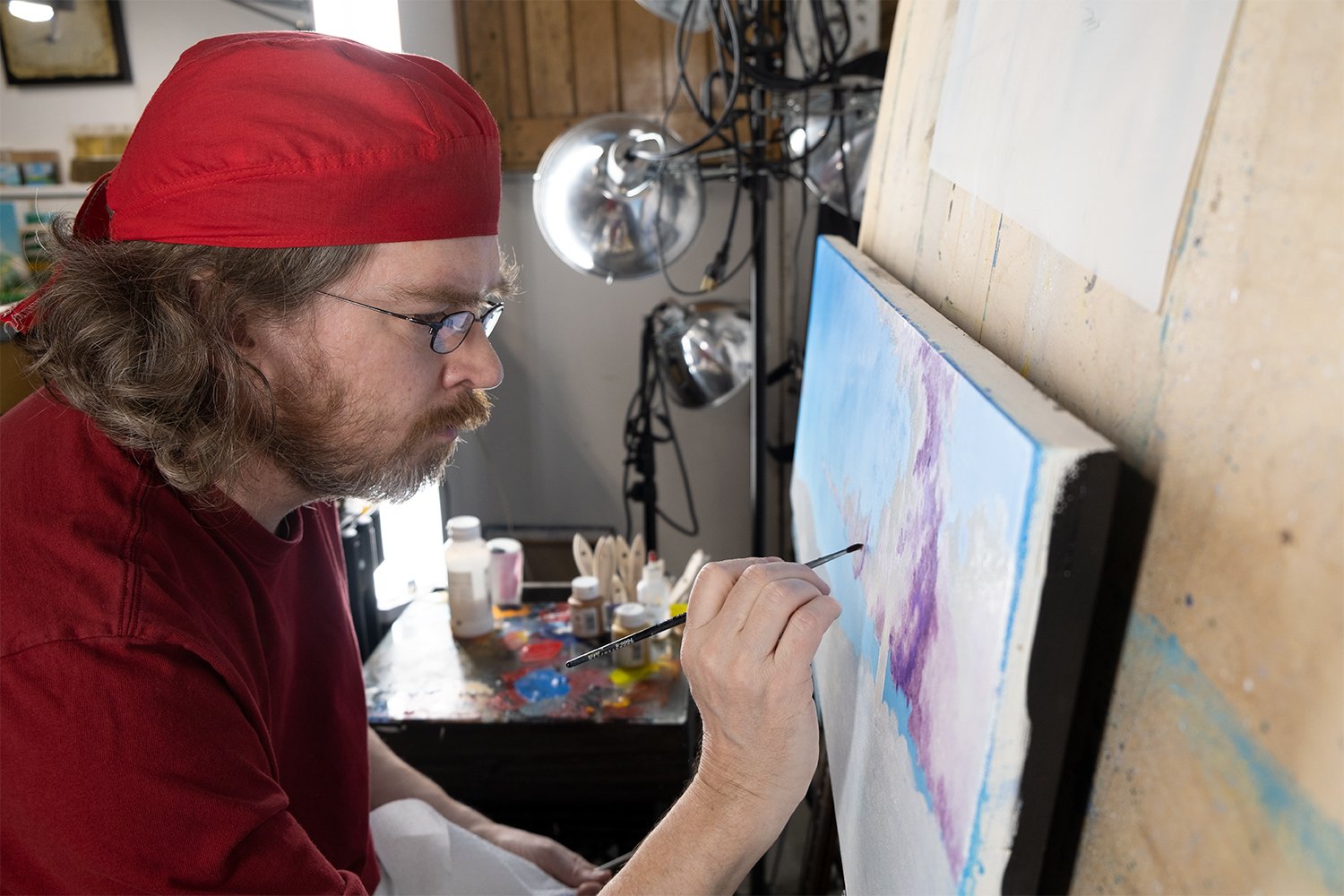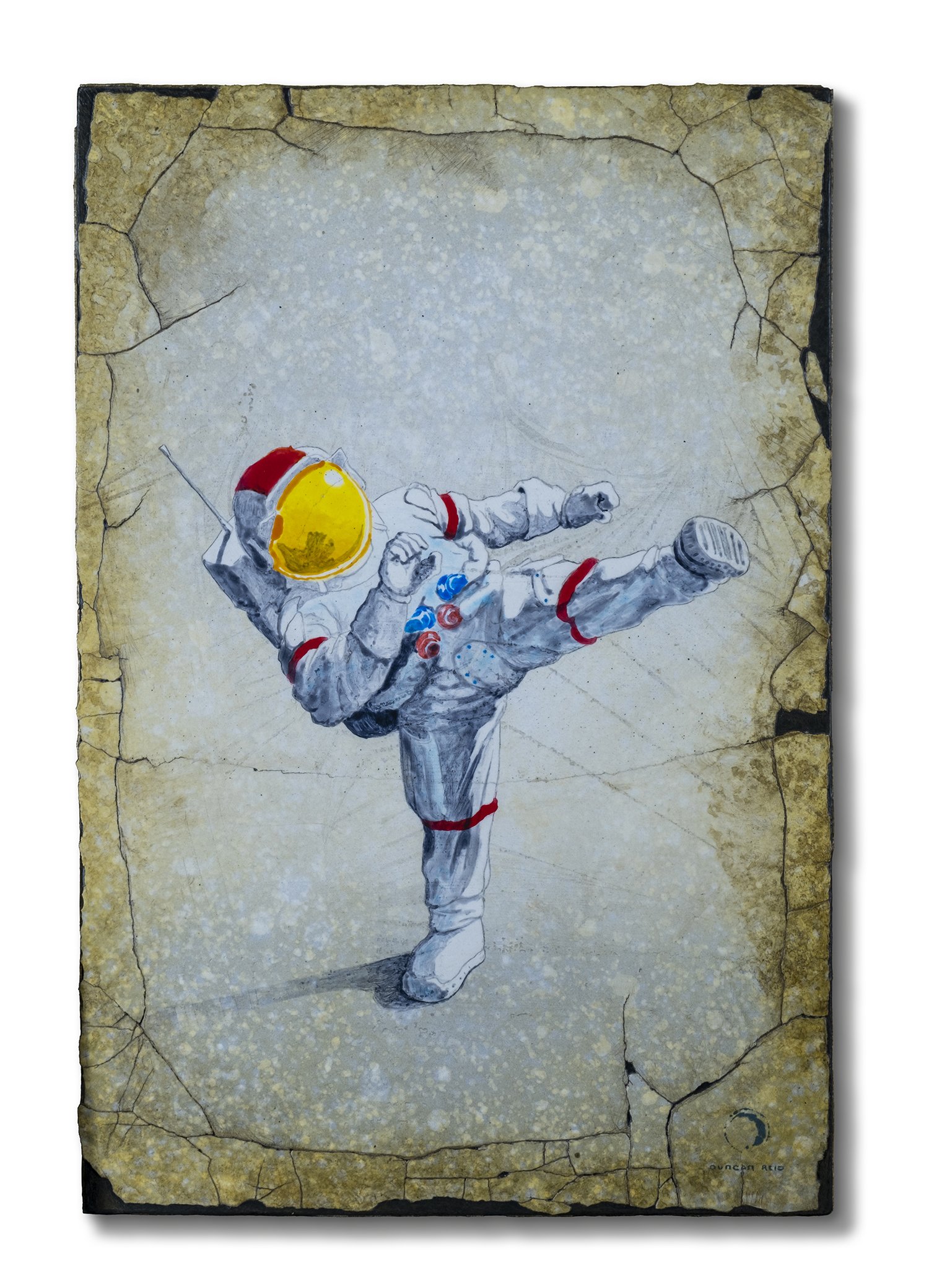Painting On Wood: Duncan Reid
Annex member Duncan Reid’s work is currently on view through November 21st, 2021 in the Annex Gallery. Below he talks a bit a bout his work and process.
This year marks the twentieth year I have been painting on wood. Though it’s difficult without my own wood shop, I have managed to construct painting panels on porches and in back yards. It took some trial and error and mastering of the lap joint, but wood has become an integral part of my work.
I grew up in a family of artists and creative people. This provided me the foundation of my art training. I have drawn or painted ever since I can remember. This was reinforced with many different pursuits over the years, including selling art supplies, making and selling art at science fiction conventions, and working in theater and film. I have also worked as a graphic artist from the time when it was all done by hand and chemicals, right through the desktop publishing revolution.




I was working as a freelance assistant designer for several ad firms when 9/11 happened. Overnight my client base dried up. While waiting for rejection letters and returned resumes I had to figure out something to fill the time. I took the last spare $100 I had and went to the local lumber store and got some masonite cut to different sizes. I have never really liked the texture of canvas and thought I’d try painting on board. The paintings I created saved me from boredom and depression and even led to a small, one-man show in Arlington.
I researched the construction of wooden painting panels trying different methods and materials, and with some borrowed power tools, began to re-enforce my boards with cradles on the back to prevent warping. This practice barely preceded the rise of the current popularity of the commercial painting panels now widely available at most art stores. Some of these store-bought panels are quite good, but I still hand-make anything over about a foot square myself.
I honed my oil painting practice by studying two rather different artists: Maxfield Parrish and Salvador Dalí, both of whom painted on wood at one time or another. I studied Parrish for his rich color and luminous glazes and Dalí for his twentieth century mastery of classical techniques.
I usually try for a smooth, untextured surface by priming the wood panel with three to five coats of painting ground. Then I sand it to a smooth but matte finish that takes the paint wonderfully.
I also experimented in acrylic on wood. I started out painting with watercolors, and acrylic seemed a natural extension of water media. Inspired by more contemporary artists such as José Parlá, Lynda Lowe, and the paintings of Kathryn Frund, I developed an acrylic technique of my own using different mediums to layer, crack, and distress the pictures. This makes them look old and worn, containing the scars and strata of an artifact from a bygone time.
Where a painting ends, for me, is a very important part of the message. For this reason I rarely frame my work. Also, with the acrylics, the distressing and aging of the surface of the art, combined with the form of the panel, heightens the idea of the painting as a whole and unique object — not simply a picture.
I started out simply wanting a smooth, non-flexible surface to paint on but over the years, painting on wood has become an underlying hallmark of my work. I look forward to one day having a dedicated wood shop that supports my painting studio.
